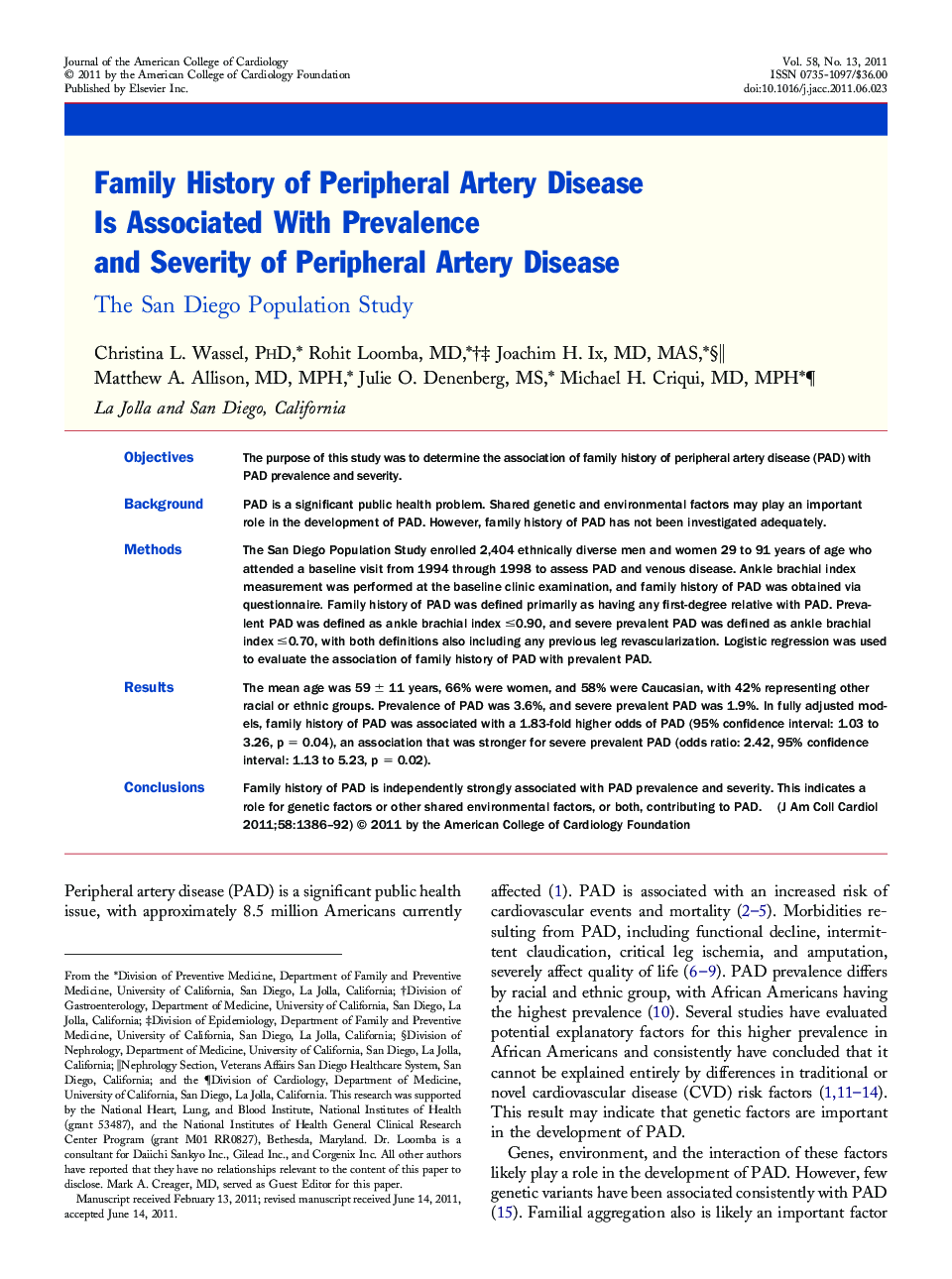| Article ID | Journal | Published Year | Pages | File Type |
|---|---|---|---|---|
| 2948555 | Journal of the American College of Cardiology | 2011 | 7 Pages |
ObjectivesThe purpose of this study was to determine the association of family history of peripheral artery disease (PAD) with PAD prevalence and severity.BackgroundPAD is a significant public health problem. Shared genetic and environmental factors may play an important role in the development of PAD. However, family history of PAD has not been investigated adequately.MethodsThe San Diego Population Study enrolled 2,404 ethnically diverse men and women 29 to 91 years of age who attended a baseline visit from 1994 through 1998 to assess PAD and venous disease. Ankle brachial index measurement was performed at the baseline clinic examination, and family history of PAD was obtained via questionnaire. Family history of PAD was defined primarily as having any first-degree relative with PAD. Prevalent PAD was defined as ankle brachial index ≤0.90, and severe prevalent PAD was defined as ankle brachial index ≤0.70, with both definitions also including any previous leg revascularization. Logistic regression was used to evaluate the association of family history of PAD with prevalent PAD.ResultsThe mean age was 59 ± 11 years, 66% were women, and 58% were Caucasian, with 42% representing other racial or ethnic groups. Prevalence of PAD was 3.6%, and severe prevalent PAD was 1.9%. In fully adjusted models, family history of PAD was associated with a 1.83-fold higher odds of PAD (95% confidence interval: 1.03 to 3.26, p = 0.04), an association that was stronger for severe prevalent PAD (odds ratio: 2.42, 95% confidence interval: 1.13 to 5.23, p = 0.02).ConclusionsFamily history of PAD is independently strongly associated with PAD prevalence and severity. This indicates a role for genetic factors or other shared environmental factors, or both, contributing to PAD.
